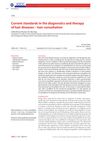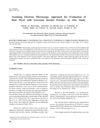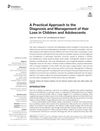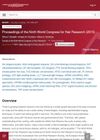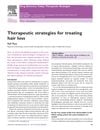Clinical Photography for Trichology Practice: Tips and Tricks
January 2011
in “
International Journal of Trichology
”
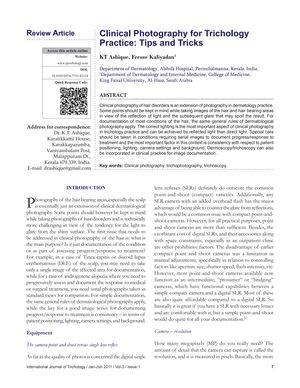
TLDR Use good lighting, consistent positioning, and proper camera settings for effective hair disorder photos.
The 2011 document provides detailed recommendations for clinical photography in trichology, highlighting the need for proper lighting, consistent patient positioning, camera settings, and a non-reflective background to effectively document hair disorders. Digital SLR cameras are preferred for their ability to reduce glare, but modern point-and-shoot cameras are also considered adequate. A resolution of 1.3 MP is sufficient for documentation purposes. The use of twin-flash systems or soft box lights is recommended to minimize glare, and a tripod is suggested for standardized imaging. The document also covers techniques for photographing specific hair conditions, such as using multiple angles for alopecia and avoiding reflections for hirsutism, and recommends macro shots for hair structure defects. It advises on the use of the Ferriman-Gallwey score for hirsutism, obtaining patient consent, using autofocus, ensuring patient comfort, storing images at 300 dpi in JPEG format, meticulous cataloging, and sharing images with patients for better understanding. Dr. Ricardo Azziz is acknowledged for the use of his image of the Ferriman-Gallwey scoring system.

